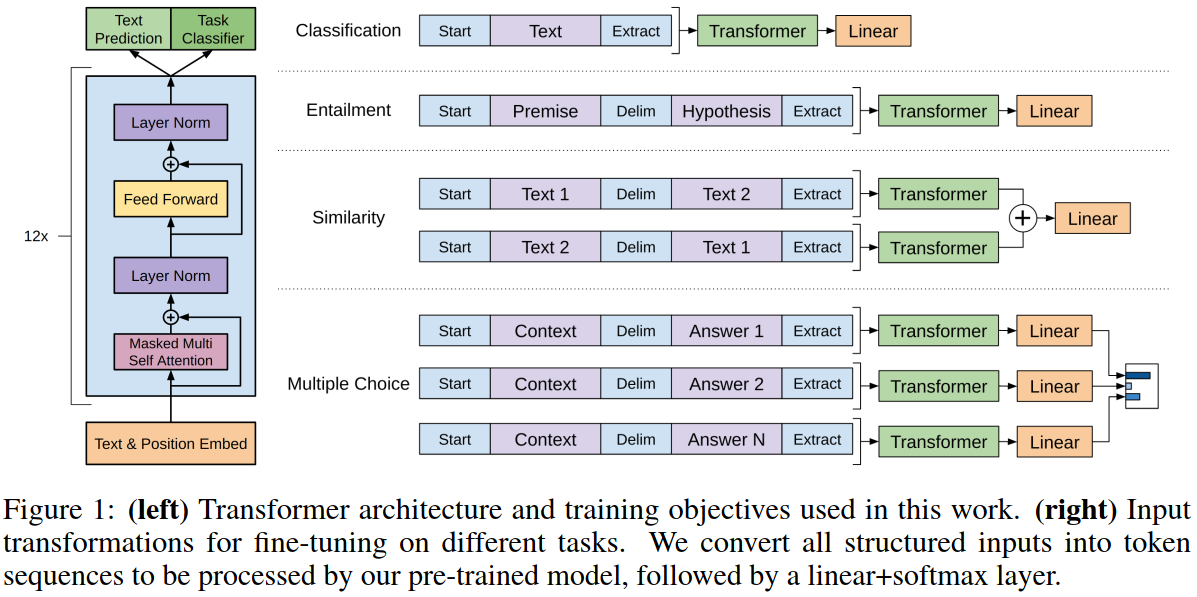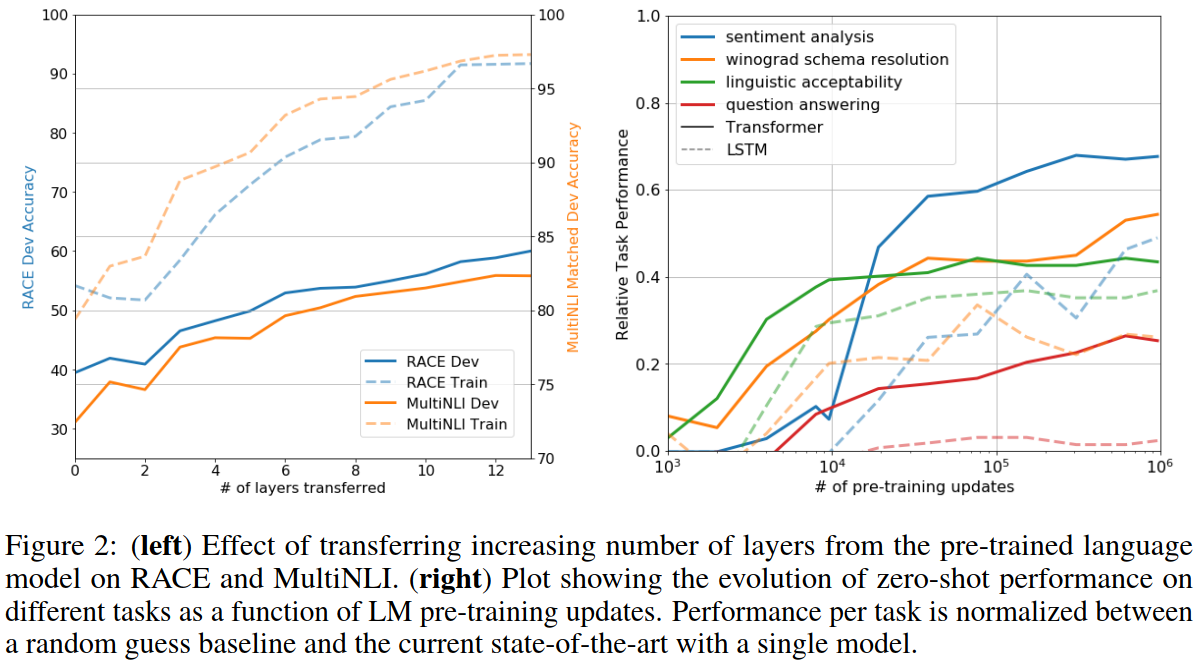| author: | chengchunhsu |
| score: | 7 / 10 |
What is the core idea?
Problem:
- labeled data for learning tasks is limited
- pre-training with good representation can provide a significant performance boost
Challenge:
- how to design training objectives?
- how to transfer to the target task?
Solution: introduced Generative Pre-Training (GPT) Model, a semi-supervised strategy for enhancing the performance on multiple NLP tasks.
- generative pre-training (unsupervised)
- discriminative fine-tuning (supervised)
How is it realized (technically)?
Model architecture: Transformer
- better capture long-term dependencies in text
Step #1: Unsupervised pre-training
-
Only use decoder of transformer
-
Objective: maximize the likelihood

-
Predict context words

Step #2: Supervised fine-tuning
-
Use the pre-trained model
-
Add linear layer as the last layer
-
Objective: maximize the likelihood

-
Auxiliary objective from step #1 helps to improve the generalization and convergence speed

Problem: some task does not have structured input
- Textual entailment (sentence pairs)
- Similarity (sentence pairs)
- Question Answering and Commonsense Reasoning (question/answer)
Solution: concatenation/fusion

How well does the paper perform?
- Benchmark
- SOTA in 9 out of the 12 datasets
- Analysis
- Impact of number of layers transferred
- Zero-shot Behaviors
- Ablation studies
Impact of number of layers transferred
Added layers provide further benefits
→ each layer in the pre-trained model contains useful functionality for solving target task.
Zero-shot Behaviors
Even without fine-tuning, the generative model gains improvement along with # iteration of updates.
→ the pretraining supports the learning of a wide range of task-relevant functionality

Ablation studies
- Larger dataset benefits from auxiliary objective
- Transformer > LSTM (by 5.6 average score)
- Lack of pre-training result in a 14.8% drop

What interesting variants are explored?
- Language Models are Unsupervised Multitask Learners, NeurIPS’20
TL;DR
- Apply one pre-trained model to many tasks
- Method: Unsupervised pre-training decoder + supervised fine-tuning
- Language model served as an effective pre-training objective which could help model generalize well